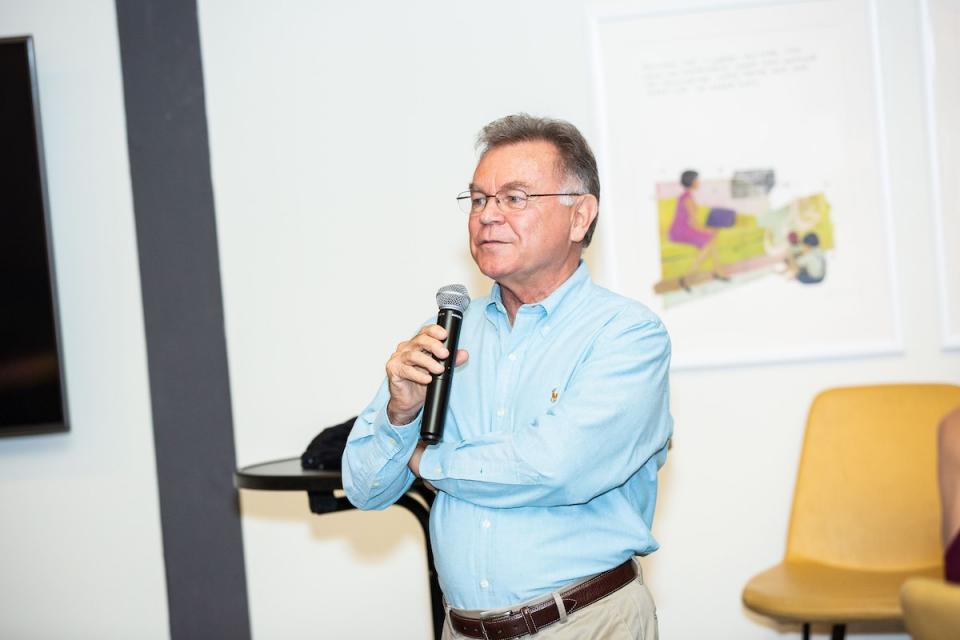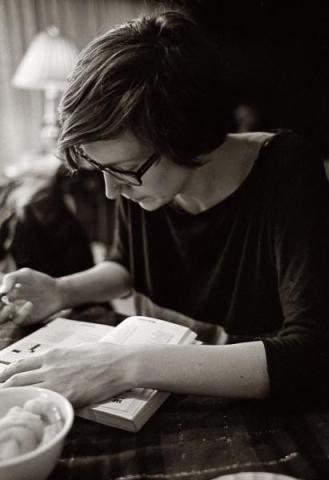Hayden’s Ferry Review coming soon to a device near you
Print journals are esteemed. Books are tangible, smell good, and make great gifts. But when it comes to interacting with a wide audience, there’s something to be said for digitizing. Doing its part to help bring humanities and good literature to the community—and hopefully, the whole world—is the Thousand Languages Project.
Alberto Ríos, Regents Professor in the Department of English and director of the Virginia G. Piper Center for Creative Writing, has been mulling this idea in his heart and mind for years. Now, the project is finally coming to fruition and Ríos couldn't be more excited. The goal is to translate Hayden’s Ferry Review, the literary journal curated by MFA creative writing students at ASU, into as many world languages as possible. “The Thousand Languages Project is onto something tidal wave-ian,” says Ríos. “We are doing something with the archival of a journal rather than letting it just sit there. It is still the lively interesting thing it was when it was first presented to the world.”
The Thousand Languages Project will be a living catalogue of translations from 30 years of Hayden’s Ferry Review, with an interactive and searchable database. Short stories, essays, and poems in the journal are currently being translated from English into a multitude of languages, with translations being done primarily by graduate students from the School of International Letters and Cultures.
Reading and writing are such awesome sources of connection, allowing readers to enter the mind of another person, providing empathy and awareness. And Ríos believes that there’s no better way to accomplish this than by bringing Hayden’s Ferry Review to everyone—with no barriers of cost or language. “This makes translation regular, rather than special,” he says. “We all need to be speaking to each other all the time.”
With a few exceptions, most of what is currently translated are academic texts, American and British classics, or popular fiction like Harry Potter. This project is unique because, as described by Katie Berta, HFR’s supervising editor, “it reframes translation as a dialogue that is in a continual state of flux.”
While there are translation databases by various groups and individuals, and translation work underway by language preservation projects, Berta admits there is nothing quite like the Thousand Languages Project in focus or scope. “The world of literary journals—and therefore much of our literary day-to-day—exists largely untranslated and inaccessible to the world outside of those journals’ home-languages,” adds Berta. “The Thousand Languages Project is an effort to make what was previously inaccessible accessible to larger communities across the globe.”
The project is being coordinated and overseen by four Piper Center staff members: Katie Berta, Angie Dell, Dana Tribke, and Alberto Ríos. During Fall 2019, they hired two translation interns who were responsible for curating and translating the content for the first issue. Spring 2020 saw three to five translation interns and a graduate student worker. Over the past year, around six HFR interns and four editor’s assistants helped facilitate digitization and organization/curation of the existing content.
Nearly all of HFR’s back issues (more than 60) have been digitized. The team has organized the pieces by content category and curated and translated the first issue of content. In time, the website will contain information about Piper Center translation events as well as scholarly essays about translation. Texts in the original languages will be published alongside each translation, allowing readers the ability to use the website as an HFR archive. “Because the project’s goal is to extend the reach of HFR and the American literary conversation to the broadest audience possible, we hope to represent as many languages as we can,” says Berta. “Multilingual graduate students from around the world are encouraged to reach out about participation in our internship program.”
Through the Thousand Languages Graduate Internship, student translators engage in a mentorship relationship with a SILC or English faculty member with translation expertise so students gain new skills and knowledge in literary translation techniques. As the project grows, translators who aren’t directly affiliated with ASU will have an opportunity to get involved.
The project is currently funded by the Virginia G. Piper Center for Creative Writing; however, the Thousand Languages Project team is on the lookout for grants that will be able to sustain the project.
The core of the project is the creation of networks between writers and readers who would never have access to each other otherwise. Upon completion, the Thousand Languages Project will generate interpersonal exchange all over the globe. The goal: anyone will be able to read the historically print-only Hayden’s Ferry Review from anywhere and in any language.
Image 1: The visual identity of the Thousand Languages Project
Image 2: Alberto Ríos addresses guests during a Piper Center event on August 25, 2018. Photo by Deanna Dent / ASU Now.
Image 3: Katie Berta is supervising editor for Hayden's Ferry Review. Piper Center photo.



